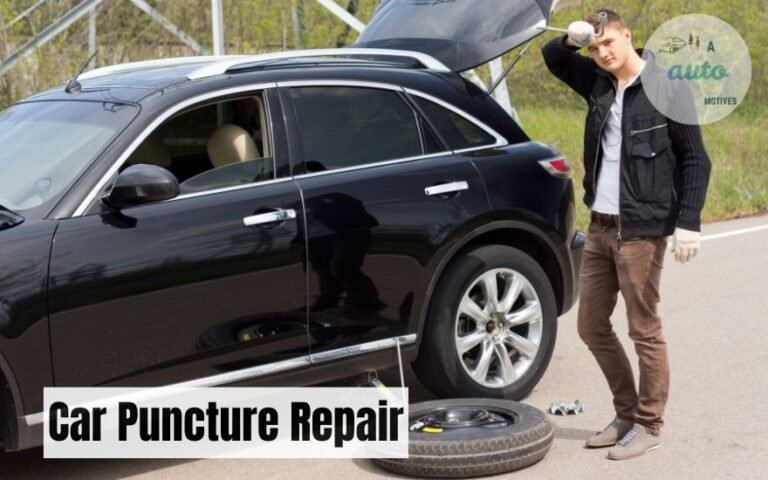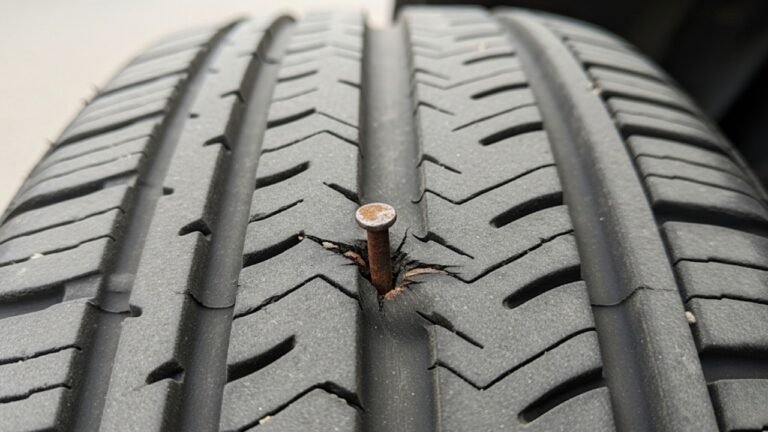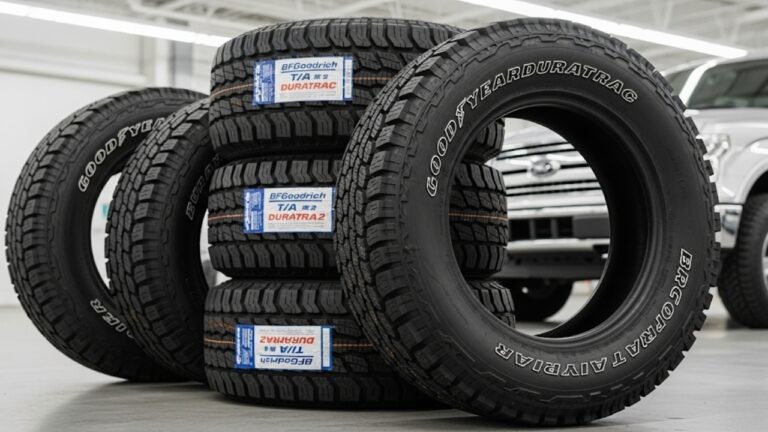How to Change a Flat Tire: A Step-by-Step Guide

There’s nothing quite like the sound of a flat tire to deflate your entire day. I remember once, I was driving home from a cousin’s wedding when suddenly—thump, thump, thump. My heart sank. It was late, the road was empty, and I had never changed a tire before. If only someone had walked me through it beforehand.
That’s exactly what this guide is for.
Whether you’re a new driver or someone who’s just never had to do it before, knowing how to change a flat tire is one of those essential life skills that instantly boosts your confidence on the road. It’s not as scary or complicated as it seems. With a few basic tools and the right steps, you’ll be back on the road in no time.
This article breaks down everything in a simple, friendly way. Think of it like a buddy talking you through the process. We’ll cover tools, safety tips, a step-by-step method, and even what not to do. You’ll also find bullet points, a quick-reference table, and some helpful FAQs at the end.
So buckle up (not literally this time), and let’s get your hands a little dirty—but safely and smartly.
Why Knowing How to Change a Flat Tire Matters

-
What if you’re out of signal?
-
What if help takes hours to arrive?
-
What if you’re late for something important?
In those moments, knowing how to change a flat tire can save your time, money, and sanity. It also gives you a sense of independence. You’re not stuck waiting. You act.
Personally, after that wedding-night disaster, I practiced at home. My dad guided me while laughing at how clueless I looked with the jack. But guess what? That 30-minute lesson saved me on a rainy night just months later. No panic. No waiting. Just action.
And beyond emergencies, there’s pride in knowing you can handle it. It’s like knowing how to cook your favorite meal or fix a leaky faucet. You don’t have to do it every day—but when you do, you’re empowered.
What You’ll Need Before You Start
Let’s get this out of the way—without tools, you’re stuck. Every car owner should have a basic kit in the trunk. Here’s a table listing exactly what you need:
| Tool | Purpose |
|---|---|
| Spare tire | To replace the flat one (make sure it’s properly inflated) |
| Jack | Lifts the car off the ground |
| Lug wrench | Loosens and tightens the lug nuts |
| Wheel wedges | Prevents the car from rolling |
| Flashlight | Essential at night or in low light |
| Gloves | Keeps hands clean and protected |
| Tire pressure gauge | Checks if spare has proper air |
| Owner’s manual | Car-specific instructions |
Pro Tip: Check your spare tire every couple of months. A flat spare is as useless as a chocolate teapot.
Step 1: Find a Safe Spot and Stay Calm
So you hear the dreaded thump or feel your steering wheel pulling to one side. First things first—don’t panic. Your safety matters more than anything.
Here’s what to do:
-
Turn on your hazard lights.
-
Slow down gradually. Don’t slam the brakes.
-
Find a flat, straight stretch of road, ideally a shoulder or parking lot.
-
Avoid curves, slopes, or narrow roads.
-
Engage your parking brake once you stop.
-
Place wheel wedges (or big rocks if nothing else) behind the wheels to keep your car from rolling.
Remember that wedding-night story? I pulled over on a dark country road under a lone streetlight. Not ideal, but better than a blind curve. I called my uncle first, but after 20 minutes of no answer, I decided to try it myself. That decision—and some cautious thinking—helped me stay safe and get moving.
Step 2: Get Your Tools Out and Ready
Once you’re safely parked and secure, pop open your trunk and grab your tools. Lay everything out neatly nearby—ideally on a flat surface.
Here’s your mental checklist:
-
Spare tire? ✅
-
Jack? ✅
-
Lug wrench? ✅
-
Gloves? ✅
-
Flashlight? ✅
Also, double-check the owner’s manual for any car-specific instructions. Some cars, like BMWs or newer SUVs, have special jack points or tire locks.
When I changed my tire the second time, I was much faster just because I laid things out beforehand. Trust me—digging through a messy trunk in the rain looking for a jack is not fun.
Step 3: Loosen the Lug Nuts (But Don’t Remove Yet)
Now comes the muscle work.
Before you jack the car up, take your lug wrench and start loosening the lug nuts (those bolts holding the wheel on). Why do it now? Because once the car is lifted, the wheel spins freely—and trying to loosen the nuts then just makes the wheel wobble dangerously.
Here’s what to do:
-
Fit the wrench snugly onto a nut.
-
Turn counter-clockwise (lefty-loosey).
-
You might need to use your body weight. I’ve even stood on the wrench before (safely).
-
Loosen each nut just a bit—don’t remove them yet.
Some nuts might be rusted or stubborn. If they don’t budge, try giving the wrench a gentle tap with your foot. But if it feels like it’s going to snap, stop and reassess. No shame in calling for help when you’ve tried your best.
Step 4: Jack Up the Car Slowly and Securely
This step makes people nervous—and understandably. Lifting a car seems intense. But if you place the jack correctly and stay calm, it’s safe and simple.
Here’s how:
-
Look for the jack point—usually just behind the front tire or in front of the rear tire (check your manual).
-
Place the jack securely.
-
Start cranking slowly. You’ll feel the car rising.
-
Lift it just high enough that the flat tire is off the ground—about 6 inches clearance is usually enough.
⚠️ Never put any part of your body under the car. Ever.
When I did it the first time, my hands were shaking. But taking it slow helped. It’s not about strength—it’s about precision.
Step 5: Remove the Lug Nuts and Take Off the Flat Tire
Now that the car is lifted and secure, go back to those lug nuts you loosened earlier.
-
Fully unscrew and remove them one by one.
-
Place them in a small container or even your pocket so you don’t lose them.
-
Gently pull the flat tire straight toward you until it’s free from the hub.
Sometimes the tire might be a little stuck due to rust. If that happens:
-
Tap the back of the tire with your palm or a rubber mallet.
-
Wiggle it gently side to side until it comes loose.
Pro Insight: The tire will be heavy. Don’t rush or twist your back. Lift with your legs.
Step 6: Mount the Spare Tire Like a Pro
Here’s where the magic happens—you’re almost there.
Grab your spare tire and line it up with the lug bolts. The holes in the rim should match the bolts perfectly. You might need to adjust the angle slightly until it slides in. Once it’s in place:
-
Push it gently all the way in.
-
Put the lug nuts back on by hand. Turn them clockwise this time.
-
Don’t tighten fully yet—just make sure each nut is threaded snugly.
⚠️ Important: Cross-tighten the nuts in a star pattern later when you’re lowering the car. This keeps the wheel evenly balanced.
I remember my second flat—on a family trip to Sylhet. I was sweating, covered in dust, but when I slid the spare into place, it felt oddly satisfying. Like solving a puzzle. Like I knew what I was doing. You’ll feel it too.
Step 7: Lower the Car Slowly and Secure the Lug Nuts
Time to bring the car back to the ground. Slowly crank the jack in reverse until the spare tire touches down and the car sits securely on it.
Once it’s on the ground:
-
Use the lug wrench to fully tighten each nut.
-
Use a crisscross/star pattern: top → bottom → left → right → center (if 5 nuts).
-
Tighten as much as you can, but don’t overdo it.
This part is crucial. If the nuts are loose, the wheel could wobble—or worse—come off.
I usually give the wrench one last push using my body weight just to make sure everything is locked down.
Step 8: Clean Up and Pack Away Your Tools
You’re done! But don’t rush off just yet.
Take a moment to:
-
Put the flat tire in your trunk (you can usually repair it later).
-
Pack the jack, wrench, gloves, and everything else back into your kit.
-
Double-check that you haven’t left anything on the road.
If it’s dark, use your flashlight to sweep the area visually. You don’t want to drive off and leave behind your only wrench.
Quick tip: Keep a small towel or old t-shirt in your trunk. It’s great for wiping your hands or sitting on if the ground is wet.
Step 9: Drive Carefully on the Spare Tire
Your spare tire is a temporary solution, not a full replacement. Most spares are smaller and lighter—what we call “donuts”.
Here’s what you need to know:
-
Max speed: 50 mph (80 km/h)
-
Distance: No more than 50–70 miles
-
Handling: You may feel a difference, especially in braking or turning
Drive cautiously and head straight to a tire shop. Get your original tire repaired or replaced.
On my second experience, I made the mistake of delaying this. The spare wore out fast, and I ended up needing two replacements instead of one. Lesson learned!
Common Mistakes to Avoid When Changing a Flat Tire
Even experienced drivers mess up sometimes. Here are a few blunders to steer clear of:
❌ Not Parking on a Flat Surface
Sloped roads increase the risk of the car slipping off the jack.
❌ Forgetting the Parking Brake
Without it, the car could roll as you’re lifting it—dangerous and scary.
❌ Tightening Lug Nuts Before Lowering the Car
This causes the wheel to spin freely. Always wait till it’s down.
❌ Driving Long Distance on a Spare
A donut isn’t meant for long road trips. Treat it like a backup parachute—temporary and vital.
❌ Skipping Regular Spare Tire Checks
Spare tires lose pressure too. Check yours monthly so it’s ready when you need it.
Bullet Summary: Steps to Change a Flat Tire
To make it easier to remember, here’s a quick list:
-
Pull over safely, turn on hazards
-
Use wheel wedges and engage parking brake
-
Grab tools and gloves
-
Loosen lug nuts (don’t remove yet)
-
Jack up the car slowly
-
Remove flat tire and place spare
-
Hand-tighten lug nuts
-
Lower car fully
-
Fully tighten lug nuts in star pattern
-
Clean up and drive slowly to the nearest tire shop
FAQs About How to Change a Flat Tire
1. How long does it take to change a flat tire?
Usually about 20 to 30 minutes if you have the tools and follow the steps. The first time may take longer, but with practice, it gets quicker.
2. Can I change a flat tire without a jack?
No, the jack is essential to lift the car safely. Never try to lift a car manually or with makeshift tools.
3. What if I don’t have a spare tire?
Some newer cars come with run-flat tires or a tire repair kit instead. Check your manual and learn how your car is equipped.
4. Should I call for roadside assistance instead?
If you’re unsure or don’t have the right tools, absolutely. Safety comes first. But knowing how to change a flat tire still gives you a valuable option.
5. Can a flat tire be repaired, or do I need a new one?
Depends on the damage. Punctures in the tread can often be patched. But sidewall damage or long-distance driving on a flat may require a full replacement.
6. What’s the star pattern for tightening lug nuts?
It’s a method to ensure even pressure when securing the tire. Tighten one, then go to the opposite nut. Repeat in a crisscross or star-shaped order.
7. Can I drive on a flat tire for a short distance?
No. Even a few hundred feet can damage the wheel rim, suspension, and more. Stop immediately and change the tire.
8. Should I practice changing a tire at home?
Yes! It’s the best way to feel confident when it happens for real. Practice in your driveway on a sunny weekend—you’ll thank yourself later.
Final Thoughts: Be Ready Before You Need to Be
Flat tires never come at a “good” time. But being prepared changes the story. Instead of frustration and helplessness, you’ll feel calm and capable. You’ll know exactly how to change a flat tire, step-by-step. You’ll become the person who others call for help—and that’s empowering.
So go check your trunk. Make sure your tools are there. Maybe even practice once. Because when the day comes—and it probably will—you’ll smile, roll up your sleeves, and say: “I got this.”






